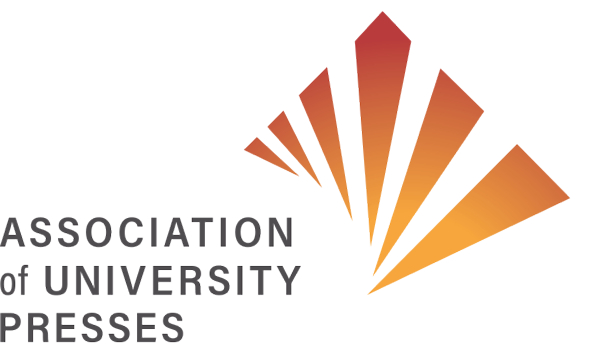The Association of University Presses was officially established in 1937 under the name “Association of American University Presses (AAUP). Unofficially, an association of university presses had joined together in spirit years before. As early as the 1920s, with the total number of university presses in the US numbering about two dozen, press representatives regularly met for dinner following the annual gatherings of the National Association of Book Publishers. The dinners, over which the publishers discussed university press opportunities and problems, eventually grew into informal full-day meetings. [Read about the history of the Annual Meeting]
This early group believed that cooperative projects were one of the key benefits of association. So in 1928, thirteen university presses produced a cooperative catalog of sixty-five titles. Soon after, the group was placing cooperative ads with The New York Times, publishing sales catalogs, and producing the first Educational Directory, a specialized direct-mailing list of American academics and librarians.
The 1932 Cheney Report encouraged joint activities among publishers facing economic difficulties and inspired a memo from Donald Bean, the group’s secretary and director of the University of Chicago Press, to his fellow “producers of highbrow tobaccos,” for the group to formally incorporate. After a 1936 announcement of Farrar & Rheinhardt’s plans to establish a “United University Presses Inc.” wholesaler (renamed, at the urging of the group, to “University Books Inc.”), the die was cast. In February 1937, the first officers of the Association were elected. [Read more about the founding of the Association]
Once official, the Association continued expanding. The first Annual Meeting outside of New York City was held in Chicago in 1946. In 1949, the AAUP-published Report on American University Presses by Chester Kerr received widespread attention, establishing university presses as a new American social institution. Membership continued to grow steadily, and the responding swell of activity led to the establishment of a central office in 1959—to take over what had, until then, been handled by volunteers.
The New York office was soon handling association and industry affairs, running annual meetings, managing a cooperative exhibits program, and publishing the Educational Directory and new Scholarly Books in America bibliography. But demand for services still exceeded the central office’s capacity. In 1964 the association founded a business subsidiary, American University Press Services, which supported additional Association services for the next two decades. [Read more about the history of Association statistics and data programs]
Cold-War-era funding of higher education encouraged a short boom of university presses: from 1920 to 1970, their number in the United States grew at a rate of about one per year, but in the stretch from 1970-1974, that rate doubled, with more than ten presses founded. The period of growth was honored by President Jimmy Carter: in the summer of 1978, he proclaimed a University Press Week “in recognition of the impact, both here and abroad, of American University Presses on culture and scholarship.” The end of the Space Race and the onset of the Vietnam War directed funding elsewhere, and the upturn was over by the mid-70s, with only five more presses founded by the closing of the millennium. [Read about the history of Women in Scholarly Publishing (WISP)]
Over the following decades, growth remained the pattern, with presses evolving in depth and variety while their number remained more or less steady. Scholarly Books in America has been replaced by University Press Books for Public and Secondary School Libraries; the cooperative advertising program expanded and new types of discount service programs were established; Books for Understanding arose from the need for authoritative scholarship following September 11; pilot programs encouraged new e-publishing ventures.
In 2012, the Association celebrated its 75th anniversary with the launch of an annual University Press Week campaign. In 2017, the board and membership voted to change the name to the “Association of University Presses (AUPresses).” The changing name recognized the expanding global identity of the membership—itself a sign that what Kerr and his colleagues had seen as an “American” (US and Canadian, specifically) model of university-based publishing had been adopted and adapted all over the world. It also happens to be the original name proposed in 1921. [View a slideshow of the Association’s visual identity over the years]
Looking ahead, the future of AUPresses will continue to be defined by an evolving response to an evergreen mission: to advance the essential role of a global community of publishers whose mission is to ensure academic excellence and cultivate knowledge.
